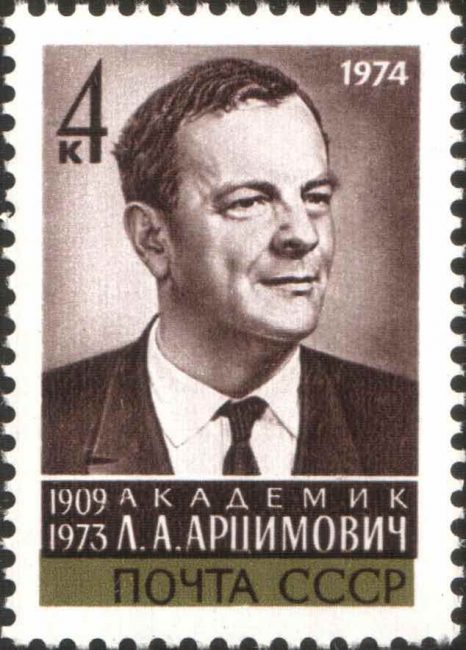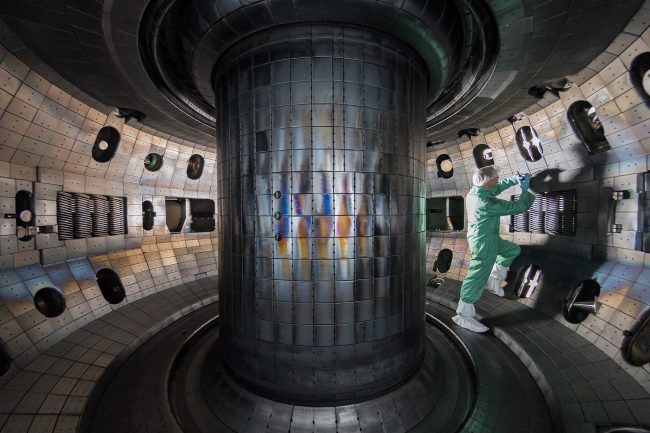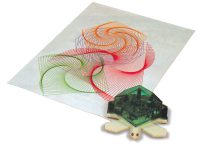
Lev Artsimovich (1909 – 1973)
On February 25, 1909, Soviet physicist Lev Artsimovich was born. Artsimovich worked on the field of nuclear fusion and plasma physics and is best known for providing the basis of the Tokamak, a device capable of confining ultra-high temperature plasma suitable for research into controlled nuclear fusion.
“Science is a way to pursue one’s sense of inquiry at the expense of the State.”
— Lev Artsimovich, as quoted by E.E. Kintner in [5]
Family Background and Early Years
Lev Artsimovich was born in Moscow, to his father, Andrei Artsimovich, a professor at BSU, who came from an impoverished noble family and worked as a statistician in the Moscow Knot Railway Department, and his mother Olga Lvovna Leuven, descendant of a Swiss Jewish family. During the times of the civil war the family was very poor and in 1919 because of the difficult food situation they left Moscow and moved to Belarus. The parents had to send their son to an orphanage, from where he escaped and for some time was homeless. After the end of the civil war, the family’s situation gradually improved. In 1922, his father was invited to the post of head of the department of statistics at the Belarusian State University in Minsk.
Academic Career
Lev Artsimovich studied physics and mathematics at the Belarusian State University in Minsk and graduated in 1928. After graduating from the university he spent about a year in Moscow, working in various libraries to improve education. In 1929 he defended his thesis “Theory of Characteristic X-ray Spectra” at the Belarusian University, which gave him the right to receive a diploma instead of a simple certificate of graduation from the university. Shortly after, he moved to St Petersburg and in 1930 joined the Leningrad Institute of Physics and Technology as a supernumerary. Artsimovich began his scientific work in the X-ray department of LIPT, but six months later he moved to the department of electronic phenomena and X-rays, headed by P.I. Lukirsky. Together with A. I. Alikhanov he carried out a number of studies on the physics of X-rays, the most interesting of which was an experimental study of the reflection of X-rays from thin layers of metals at very small angles. us
Research on the Atomic Nucleus
During World War II, Artsimovich was evacuated to Kazan, where he was engaged in defense reseacrh. He conducted theoretical research in the field of electronic optics and radiation theory. Furthermore, he took part in the development of electron-optical night vision systems in the infrared region of the spectrum. In 1944 he joined the “Laboratory number 2”, currently Kurchatov Institute to work on the Soviet atomic bomb project. From 1951 to his death in 1973, he was the head of the Soviet fusion power program.[3] Lev Artsimovich became best known as “the father of the Tokamak“, a special concept for a fusion reactor. During the beginning of World War II, research on nuclear fission took off. However, the research was classified as secret and only after the 1955 United Nations International Conference on the Peaceful Uses of Atomic Energy in Geneva programs were were declassified and international scientific collaboration could take place.

The reaction chamber of the DIII-D, an experimental tokamak fusion reactor operated by General Atomics in San Diego, which has been used in research since it was completed in the late 1980s. photo: Rswilcox, CC BY-SA 4.0, via Wikimedia Commons
The Tokamak
In 1956 the first experiments on tokamak systems were conducted at Kurchatov Institute, Moscow. A tokamak is a device that uses a powerful magnetic field to confine plasma in the shape of a torus. Achieving a stable plasma equilibrium requires magnetic field lines that move around the torus in a helical shape. Such a helical field can be generated by adding a toroidal field (traveling around the torus in circles) and a poloidal field (traveling in circles orthogonal to the toroidal field). In a tokamak, the toroidal field is produced by electromagnets that surround the torus, and the poloidal field is the result of a toroidal electric current that flows inside the plasma. This current is induced inside the plasma with a second set of electromagnets. The group led by Lev Artsimovich constructed the the first tokamaks, the most successful being T-3 and its larger version T-4. The latter was tested in 1968 in Novosibirsk, conducting the first ever quasistationary thermonuclear fusion reaction.
Later Years
In 1968 it was announced that Soviet scientists were able to achieve electron temperatures of over 1000 eV in a tokamak device. Even though British and American scientists were first sceptical, the results were confirmed with the help of laser scattering tests one year later. In 1946 Artsimovich became a corresponding member and in 1953 a full member of the Soviet Academy of Sciences, and from 1957 he was a member of its Presidium. From 1963 to 1973 Artsimovich was the vice-chairman of the Soviet Pugwash Committee and the chairman of the National Committee of Soviet Physicists. He was elected a Foreign Honorary Member of the American Academy of Arts and Sciences in 1966
Lev Andreevich Arstimovich died on March 1, 1973.
At yovisto academic video search you can learn more about Does the world need nuclear energy in a TED talk by Steward Brand.
References and Further Reading:
- [1] Lev Artsimovich – the Father of the Tokamak
- [2] Fusion Power – a Step in the Right Direction at New Scientist (1976)
- [3] Igor Vasilyevich Kurchatov – Father of the Soviet Atomic Bomb, SciHi Blog, January 12, 2015.
- [4] Coppi, Bruno; Feld, Bernard T. (July 1973). “Obituary: L. A. Artsimovich”. Physics Today. 26 (7): 60–61.
- [5] E. E. Kintner, Artsimovich Memorial Session of the 17th International Conference on Plasma Physics and Controlled Nuclear Fusion Research
- [6] Artsimovich Memorial Lecture-OFES
- [7] Lev Artsimovich at Wikidata
- [8] Timeline for Nuclear Fusion, via DBpedia and Wikidata





